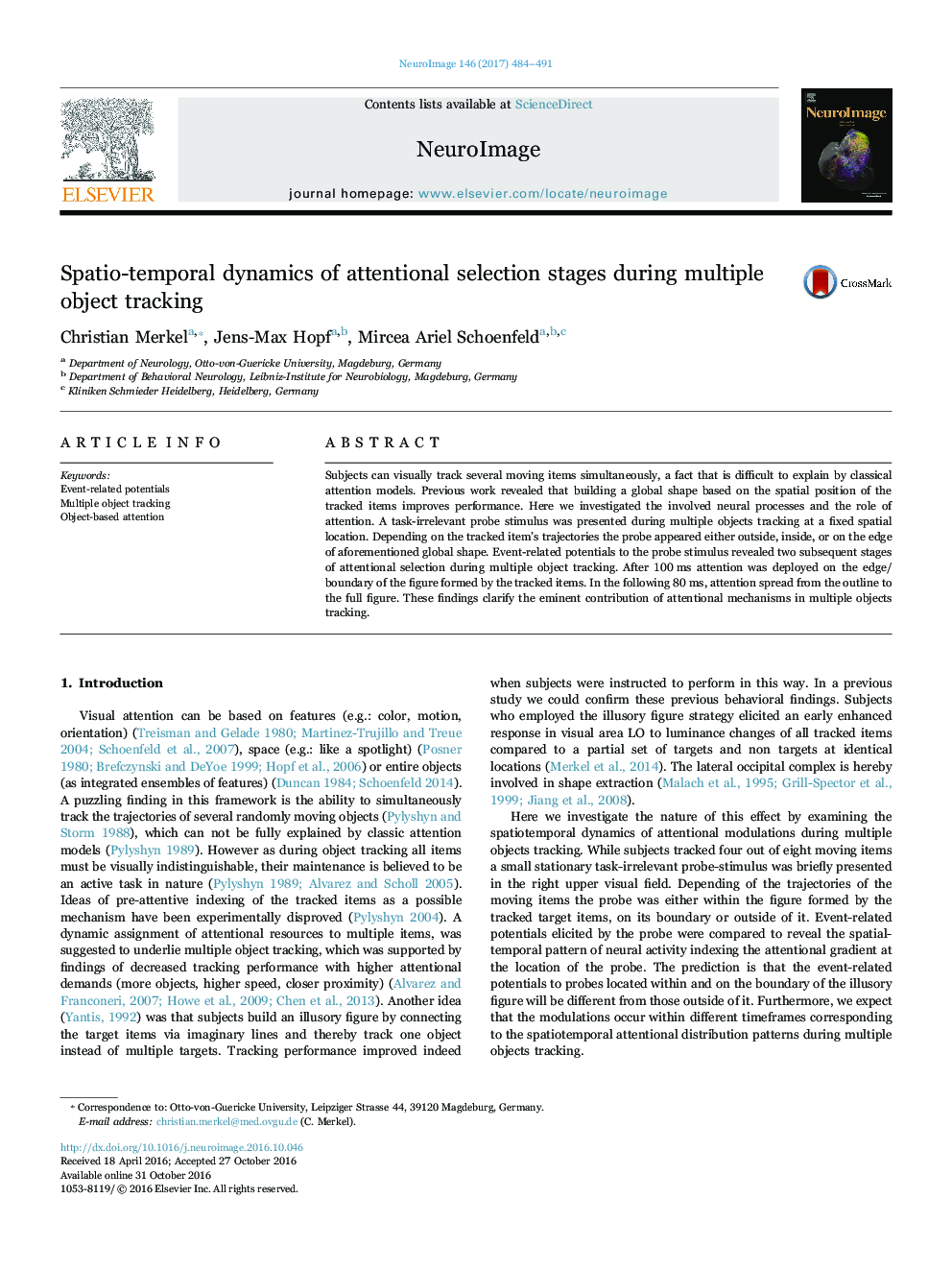| Article ID | Journal | Published Year | Pages | File Type |
|---|---|---|---|---|
| 5631357 | NeuroImage | 2017 | 8 Pages |
â¢Multiple-object tracking relies on efficient and rapid visual attention deployment.â¢During object-tracking the spatial distribution of attention changes over time.â¢Attention is deployed on the outline of an illusory figure formed by tracked items.â¢Afterwards attention spreads across the entire surface of the figure within 80 ms.
Subjects can visually track several moving items simultaneously, a fact that is difficult to explain by classical attention models. Previous work revealed that building a global shape based on the spatial position of the tracked items improves performance. Here we investigated the involved neural processes and the role of attention. A task-irrelevant probe stimulus was presented during multiple objects tracking at a fixed spatial location. Depending on the tracked item's trajectories the probe appeared either outside, inside, or on the edge of aforementioned global shape. Event-related potentials to the probe stimulus revealed two subsequent stages of attentional selection during multiple object tracking. After 100Â ms attention was deployed on the edge/boundary of the figure formed by the tracked items. In the following 80Â ms, attention spread from the outline to the full figure. These findings clarify the eminent contribution of attentional mechanisms in multiple objects tracking.
